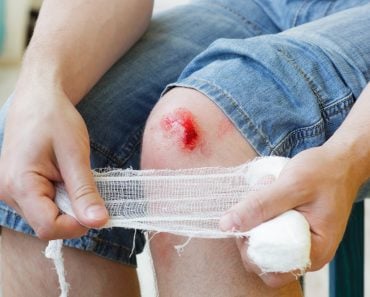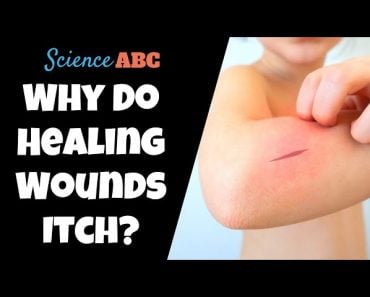Table of Contents (click to expand)
Silver nitrate works on human wounds by acting as an antiseptic and cauterizing agent. The silver nitrate applicator sticks are composed of silver nitrate and a small amount of potassium nitrate, and become activated when the tips of the sticks are exposed to water. When the silver nitrate comes into contact with water, it creates a chemical reaction that allows it to be applied directly to the site of the wound. The silver nitrate helps to disinfect the wound and speed up the healing process.
When you fall and scrape your knee as a child, your mother probably applied a bit of antiseptic and slapped a Band-Aid on it before sending you back off onto the playground. Our body is quite good at recovering from minor injuries, and has a number of built-in tools to help the body heal.
However, there are those instances of more serious damage to our tissues or body that may require a bit of artificial help beyond Neosporin. Furthermore, in certain conditions when infection is already present or highly likely, some sort of defense is essential.
For nearly 200 years, medical practitioners across the world have been using silver nitrate (AgNO3) in various forms to speed the healing process of these more serious wounds. The application of the chemical is different than most medical procedures you may be familiar with, yet it remains in use to this day!

Recommended Video for you:
How Is Silver Nitrate Used?
Silver nitrate is an inorganic compound that has a number of applications in various industries, from photography to electron microscopy. However, when it comes to medical applications, the antiseptic and cauterizing qualities of this compound make it quite valuable, particularly outside of a formal hospital setting. This compound is used topically in the case of more serious wounds that may have deeper granulated tissue formation, or rolled/calloused edges, as these conditions will encourage infections. Furthermore, due to the caustic nature of silver nitrate, it is able to stem the flow of bleeding and cauterize the edges of a wound, effectively sealing up capillaries.
The method of topical application differs slightly, depending on which type of silver nitrate you are using. For cauterizing and disinfecting open wounds, silver nitrate applicator sticks should be used, and this is the primary form you will find. However, you can also use silver nitrate to treat warts and skin tags, in which case a silver nitrate ointment should be used.
Silver Nitrate Sticks
The silver nitrate applicator sticks are composed of both silver nitrate and a small amount of potassium nitrate, and become activated when the tips of these sticks (which look like long matches) are exposed to water. Without the introduction of water, the sticks are harmless and inactivated, but when it touches water, the chemical reaction is catalyzed, at which point the sticks can be applied directly to the site of the wound.

However, to safely and properly apply silver nitrate to a wound, significant safety precautions should be taken. Essentially, if the reason you are using silver nitrate is to disinfect the wound, you should make every effort not to further contaminate the wound. This begins with removing the bandage from the wound with clean gloves, cleaning the wound with a sterile solution, donning new gloves between each step, and finally applying a boundary around the wound.
Remember, silver nitrate is very caustic, and while it can be beneficial to protect the damaged tissue of a wound, it can also cause discomfort and damage to perfectly healthy tissue. The petroleum jelly will form a boundary to restrict the active area where the silver nitrate will operate. The intensity of the “burn” from the silver nitrate is based on how long the activated stick is applied to the tissue. For most wounds, it is recommended that you gently rub and twirl the stick for no more than two minutes, as this should be sufficient for it to take effect.

Does Silver Nitrate Hurt?
While there may be some discomfort or sensation at the application of silver nitrate, it should not be a painful treatment, per se, and you should stop if you experience any painful burning. Once the stick has been applied, gently pat the area dry with damp gauze, and then dry gauze, before re-covering the wound or applying any other foundational salves or medicines to the site of the injury. Depending on the severity and type of wound, application frequency and duration can range from 1-2 times per day for a few days up to multiple weeks. Speaking with your doctor about these more specific details for wound care is critical!
Precautions To Take When Using Silver Nitrate
While this is a rather rudimentary treatment, and far less complex than many other modern-day treatments or procedures, it can also be dangerous, so proper precautions must be taken. Some of the key guidelines and tips to remember when using silver nitrate on a wound include the following:
- Although there is not a flame on the edge of this matchstick-looking applicator, it can still cause a burn on your skin, clothes or other objects if left in contact (once activated with water).
- Always apply petroleum jelly in a protective ring around the edge of the wound to reduce your chances of damaging healthy tissue.
- If you experience a burning sensation or pain, discontinue immediately; you can then apply saline to the site if you wish to dilute or wash away some of the excess chemical.
- Use protective equipment when applying this so the site of a wound, including gloves, both to minimize potential infection and accidental contact with the activated silver nitrate.
- Do not use silver nitrate for an extended period of time, as it will prevent fibroblast formation, which is necessary for the normal healing process.
- Before applying silver nitrate at home, be sure to speak with a medical practitioner, or have the wound looked at by a professional. If a wound does require that sort of extra attention, it it likely serious enough that it should be seen by a doctor first!

A Final Word
Despite being in the age of incredible medical miracles, there are still some relatively “ancient” techniques from the last couple centuries that remain effective and essential in certain parts of the world where medical attention may not be easily accessible or of a high quality. Silver nitrate applicators and creams rely on basic chemical properties and function as a reliable first line of defense for serious lacerations and wounds on the skin. This chemical compound is a short-term solution that promotes the long-term healing process.













